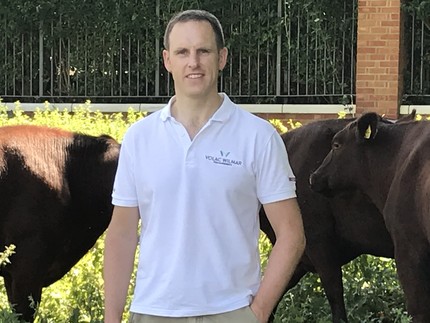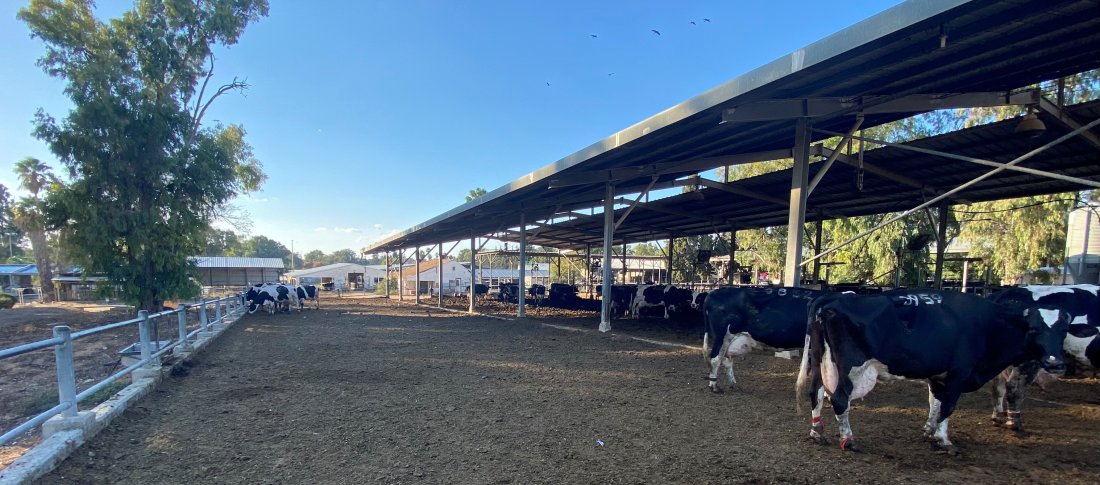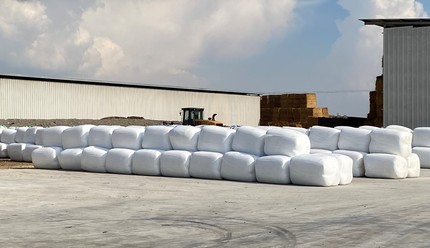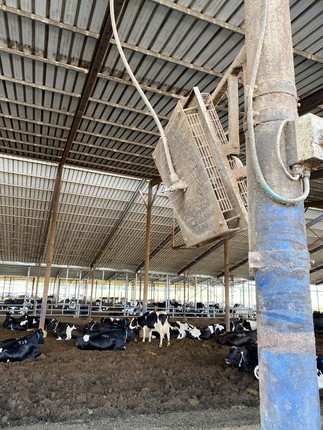As part of his role at Volac Wilmar, Global Technical Manager, Dr. Richard Kirkland, has travelled across continents around the world to explore the various extremes of dairy farming and see what can be learned from other approaches and techniques.
In his latest dairying expedition, Dr. Richard visited Israel to see how this Middle-Eastern country has come to develop a fascinating and efficient food production system.
 Dairying in Israel – views of a visitor
Dairying in Israel – views of a visitor
Think of Israel and initial thoughts would likely relate to an area of considerable historical significance where events that have shaped the world have their origins. From Jerusalem and the Wailing Wall to the Dead Sea and the Sea of Galilee, the country is defined by sites of religious and cultural importance.
Within these settings there is also a prosperous agricultural system, despite the often harsh climatic and geographical challenges typical of the Middle-East, challenges that have been overcome and which have enabled development of efficient food production systems.

The dairy industry is reasonably small with around 120,000 dairy cows, but has developed to be one of the most productive in the world with average lactation yields over 12,000 kg per cow. Hot temperatures and lack of suitable land areas put pressure on the production of forages such that the key forage grown is wheat silage, most prevalent as this crop can make better use of the winter rain during the growing season. Lesser areas of maize silage, alfalfa and wheat hay are also produced.
These production challenges and low availability of forage lead to somewhat unique low-fibre diets, with forage typically around 35% of the ration mix supplemented with cereals and other by-products. Other common ingredients used in rations include maize grain, maize gluten, rapeseed meal, cottonseed and distillers grains.
Adaptation and evolution
The Israeli cow is a hardier breed than the standard Holstein-Friesian, a result of local breeding which has produced a smaller animal able to cope with the warm summers and low-fibre diets available. Despite the low forage content of the diets, milk solids remain impressive with milk fat typically around 3.9% and milk protein 3.4% at this time of year. Farmers and nutritionists face additional challenges where religious practices affect what feed can be offered where kosher practices are in place - for example, wheat must be removed from the diet during the Passover period and diets reformulated - quite a challenge where wheat-based ingredients may be a key part of the forage and supplement parts of the diet!

Diets may run around 25% starch and rumen-protected fat supplements are used in practically all diets, primarily as energy sources and to improve milk fat production for which farmers are paid. Calcium salt fat supplements have been used historically but the use of milk fat-boosting ‘high-C16’ supplements has increased recently with a push for higher milk fat by processors, particularly during heat stress periods when milk fat declines.
Understanding Israeli dairy farming
Most dairy herds are located in the traditional Kibbutz communities, co-op arrangements where people live together and share the workload and outputs from the farms and other businesses, as well as in the Moshav system where businesses are more-individually owned. Animal feed is primarily produced by regional ‘feed centres’ which prepare complete diets and deliver direct to farms and dispense to cows on a daily basis, most farms in a region typically receiving the same prepared diet.
Some feed centres offer not just bulk deliveries, but also plastic-wrapped 25 kg and up to 600 kg packs, which are delivered to farm and can supply feed sufficient for a several day period. Typical of these ‘hot’ country dairies, cows are typically housed in covered sheds and bedded on dried manure.

Milk production is under a quota system and production is largely seasonal, with lower production in the hotter summer period to help avoid peak milk production and fertility challenges in the hot conditions.
Milk processors offer a bonus for milk produced in the summer to encourage supply which many farmers have now targeted for higher returns, though in some cases the switch is leading to a reduced bonus incentive as supply increases through this period. Milk price in recent times has been around 58 ppl, though input costs are high. The dairy industry is largely controlled by the Israeli government which also sets the milk price.
The Israeli dairy system is another example of how an efficient dairy production system has developed in the face of natural challenges to supply nutritious food for the local population. With advanced technology and nutritional experience, the Israeli dairy sector is one others can learn lessons from.
Further Global Dairy Farming Insights
The resilience and adaptability of the global dairy farming industry continues to impress, as innovation and operational efficiency are byproducts of some very fundamental challenges to the agricultural status quo.
Revisit some of Dr. Richard’s previous international investigations - discover how they dairy in Dubai, learn low dairying works in Chile, and pour over dairy farming in Peru; and be sure to read his thoughts on the extremes of dairy farming.
Enjoyed this read? Stay connected with us on Facebook, Twitter and LinkedIn for more insights.